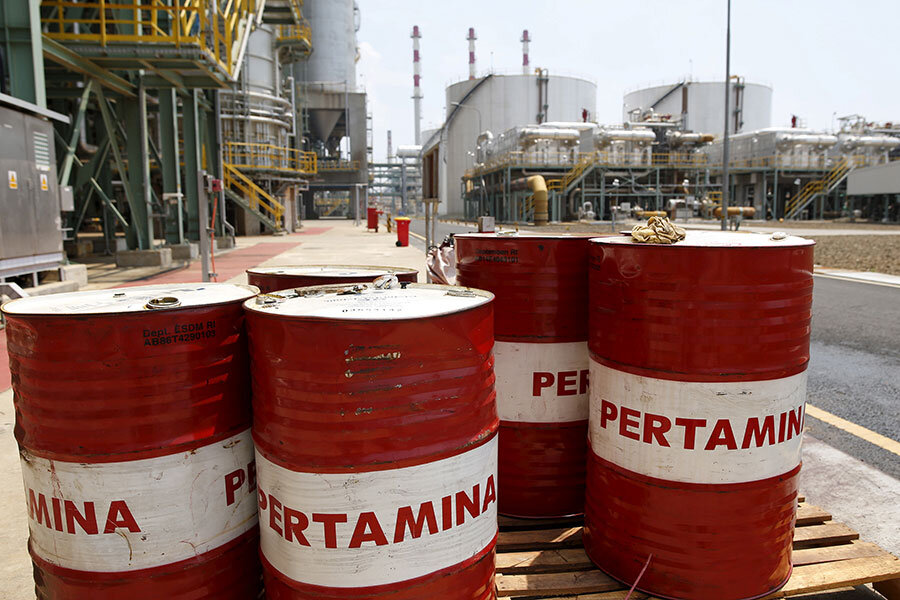OPEC cut pushes oil prices up to 16-month high
Loading...
The price of crude oil hit a 16-month high Monday morning, following the Organization of the Petroleum Exporting Countries (OPEC) decision last week to cut the overall oil output by 1.2 million barrels per day.
OPEC's stunning decision to reduce output, announced Wednesday from the group’s meeting in Vienna, is a major course reversal for Saudi Arabia, in particular: the kingdom will bear the brunt of the decrease, even after spending the past two years refusing to do so in the face of a glut of shale oil produced in the United States. The move is in effect an admission of defeat on the part of OPEC producers and a victory for the United States, Venezuela, and Russia.
The drastic measure is an attempt to stabilize the market, which has shuddered in the wake of the 2014 collapse of crude oil prices, and is contingent on securing an agreement from non-OPEC countries to further lower production by an additional 600,000 barrels per day (b.p.d.).
Saudi Arabia has agreed to reduce its output by just under 500,000 b.p.d., with Iraq and the United Arab Emirates following with 210,000 and 139,000 b.p.d. cuts, respectively. However, the actual production levels could be higher, as cheating on such agreements is common.
OPEC hopes that the implementation of such a decision will stabilize the global market. And so far the market has responded, with crude oil hitting $55 per barrel for the first time in 16 months.
While markets have rebounded in the short-term, some are still waiting to see if the deal – which is contingent on Russia cutting 300,000 b.p.d. – will stick.
As oil revenue makes up much of the Russian government’s income, some skeptics are wary that they will comply with such a large decrease in production.
"No, I don't think so at all," Chris Weafer, a senior partner at Macro Advisory, told CNBC, when asked if he thought Russia would comply with the agreement. "Yesterday's meeting obviously generated very strong headlines but (it was) very weak in the detail, in particular the detail concerning the supposed contribution of non-OPEC producers of 600,000 barrels cut."
OPEC, founded in Baghdad in 1960, was originally made up of the world’s five largest oil producing countries: Iraq, Iran, Kuwait, Saudi Arabia, and Venezuela. Now headquartered in Vienna, the massive cartel is comprised of 14 countries, and accounts for 43 percent of global oil production as well as 73 percent of the world’s oil reserves.
Most recently characterized by self-interest and political infighting, OPEC defied critics by enacting the recent agreement to curb output, the first deal of its kind since 2008 when the cartel agreed to cut production by 2.2 million barrels per day – the largest ever of its kind. As with the latest decision, the 2008 agreement sought to stabilize global oil prices as they then continued sinking below $40 per barrel.
While prices rebounded following the 2008 low, hitting a high of $115 per barrel in the summer of 2014, the global market sagged and crude oil dropped steadily, eventually hitting bottom below $30 per barrel.
Though the deal has brought about a current surge in global oil prices, it is unclear just what effect, if any, such a production decrease will have on the United States economy as well as domestic gas prices.
Recently OPEC’s overall influence has been diminishing due to a consistent increase in US-based oil production. In 2015, only 24 percent of the United States’ oil consumption came from net imports: the lowest annual level since 1970, according to USA Today.
The long-term effects of an OPEC reduction remain murky, as The Christian Science Monitor's Laurent Belsie reported in September when a tentative outline of the agreement was made public:
It could drag down already weak economic growth worldwide by boosting what Americans and most of the world’s motorists pay at the pump. It throws a possible lifeline to beleaguered OPEC members, especially Venezuela, Nigeria, and Libya, which have floundered in the era of low oil prices.
Or it could do none of these things. There’s deep skepticism that OPEC will be able to agree on new production quotas, especially given the tension between Saudi Arabia and Iran. World oil markets, which surged on the cartel’s announcement Wednesday, were quiet on Thursday as traders and analysts assessed the cartel’s likely path.
Perhaps more intriguing is the strategy of the Saudis themselves. Having now made noises about controlling production and boosting prices, it could go further to singlehandedly enforce some real discipline, according to some analysts. But others suggest that newest move is temporary, with Riyadh happy in the long term to let the oil glut work itself out without OPEC intervention.
In the end, OPEC settled on a six-month agreement, leaving analysts wondering how lasting any effects of the measure will be.
“Two things might be priced in this change – the first one is that shale producers are hedging and the second one is that the deal is for six months and then no one knows what’s going to happen,” Tamas Varga, an analyst at brokerage PVM Oil Associates Ltd., told Bloomberg.







